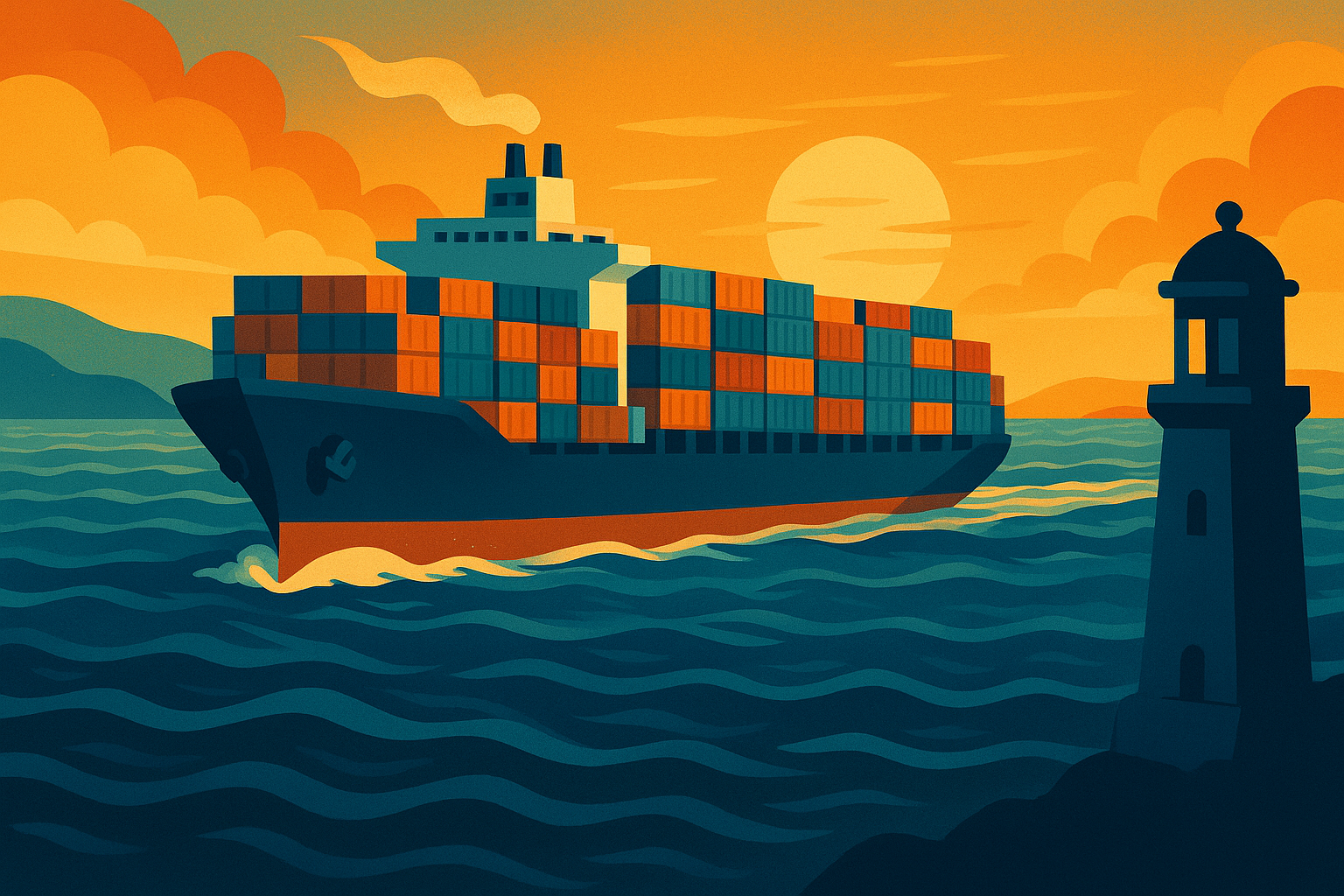This week:
- President Trump issues executive order to pause reciprocal tariffs on China for another 90 days
- US containerized imports hit record high in July as 1 million TEUs flow through Port of Los Angeles
- USPS to require Harmonized System (HS) codes for outbound commercial shipments on Sept. 1
- Despite concerns over price hikes and confusion, US LTL reclassification has had minimal impact
The United States is again delaying the implementation of higher import duties on goods from China, following the recent expiration of a 90-day pause on the White House’s reciprocal tariff policy. The latest extension is good through November 10, according to an executive order signed by President Donald Trump last week.
In a press release, the Trump administration said that the extension is appropriate, as the US and China are taking “significant steps” toward resolving trade concerns. The move provides another 90-day reprieve from higher US tariffs, following the end of the first pause earlier this month.
China’s Ministry of Finance announced last week that it would also maintain its reduced 10% tariff rate on US goods for an additional 90 days. In May, China lowered its 34% tariff rate on US goods and removed other retaliatory duties.
In June, President Trump announced that a proposed agreement would result in the US imposing a total of 55% tariffs on Chinese imports, while China would maintain a 10% duty on American products. That framework is still pending, and some analysts say the path to such a deal remains unclear.
The ongoing trade dispute continues to impact global supply chains. China remains a critical manufacturing hub for the US, as it accounted for 10.9% of all American trade activity in 2024. However, the US trade deficit with China was approximately $295 billion last year, its largest with any trading partner, and trade deficits are one of Trump’s primary motivations for his reciprocal tariffs.
Containerized Imports Reach Record, Port of LA Handles 1 Million TEUs in July
US containerized imports reached a record high in July, primarily due to tariff-induced frontloading. The majority of ports around the country saw double-digit increases in volume compared to June, according to reporting by Michael Angell, a senior editor for the Journal of Commerce (JoC).
Total US container volumes in July reached 2.609 million TEUs, the highest monthly total ever recorded by PIERS, a sister company of the JoC. This volume represents a 17.5% gain from June.
Although China continued to be the leading point of origin for international goods, US shippers also imported significant volumes from southern Europe and Southeast Asia, Angell said.
July was also the busiest single month on record for the Port of Los Angeles, according to Max Garland, a senior reporter for Supply Chain Dive. Port officials announced in a briefing last week that they handled just over 1 million TEUs in July.
Gene Seroka, executive director for the Port of LA, said the import surge was driven by frontloading, as US businesses were “hustling to bring in cargo ahead of potential tariff hikes.” Seroka said that July will likely be the peak for imports in 2025 but that he doesn’t expect volumes to “fall off a cliff,” and that August’s import figures will still be strong.
Subscribe to JMR’s Weekly Supply Chain Roundup!
Stay informed with the latest supply chain news, trends, and insights. Get it delivered directly to your inbox every week.
USPS to Require Harmonized System Codes for International Shipments
The US Postal Service (USPS) will require a six-digit Harmonized System (HS) code for all outbound international commercial shipments, effective September 1, according to an agency bulletin issued this month.
The HS code is an international standard developed by the World Customs Organization that aims to simplify the process of classifying goods and assessing tariffs. The new USPS rule will require shippers to use the appropriate HS code, regardless of mail class.
The new requirement will take effect just three days after another significant change for international postal shippers. On August 29, the Trump administration’s move to end the de minimis exemption for postal packages will add new duties to many smaller US-bound shipments.
The change also aligns USPS mailing standards with Universal Postal Union (UPU) regulations that also take effect on September 1. According to a UPU guide, the code is “vital to ensuring effective fiscal clearance and is important for eCommerce volumes.”
Experts warn that failure to comply could lead to shipments being returned, delayed, or assessed incorrect duties. Alison Layfield, VP of product development at ePost Global, said that while tools exist to help find the correct codes, a clear product description is essential. Shipping a package without the required code “is probably not going to be a good outcome for the consumer,” Layfield said.
US LTL Reclassification Hasn’t Led to Higher Shipping Costs, Experts Say
Major revisions to the US less-than-truckload (LTL) classification system, which were widely expected to increase shipping costs and cause confusion, have had a minimal impact nearly a month after their implementation, according to trucking industry experts.
Despite fears of widespread price hikes following the July 19 overhaul of the National Motor Freight Classification (NMFC), stakeholders report little to no change in freight invoices and few, if any, customer complaints.
The outcome has been described by one expert who spoke to the JoC as “almost like a Y2K moment,” referring to the predicted but unrealized computer crisis of 2000.
The NMFC revisions, the largest in the LTL classification system’s 90-year history, have caused more than 2,000 products to be classified based solely on density. This is the specific change that was anticipated to push rates higher. However, industry executives credit extensive preparation by both shippers and carriers for the smooth transition.
“The level of preparation the industry did was amazing,” said Joe Ohr, COO of the National Motor Freight Traffic Association, which oversees the NMFC.
While the classification changes have had a minimal impact, overall LTL costs continue to rise due to other market pressures. The long-distance LTL producer price index, a US Bureau of Labor Statistics measure of all-in costs, rose 7.3% year-over-year in July to 265.45, a new record high.






